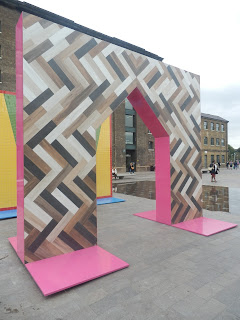I have been featuring a range of chairs inspired by butterflies in my Butterflies Through Other Eyes series (here, and here). As the London Design Festival has just come to an end in the capital I thought it was time to give attention to another classic butterfly inspired piece of product design in the form of this iconic Butterfly Stool, by Japanese product designer Sori Yanagi (1915-2011).
Yanagi was a modernist who twinned simple, functional design with traditional elements of Japanese craftsmanship.
Key influences in his design aesthetic was the work of both architect/designers Le Corbusier and Charlotte Perriand. The Butterfly Stool is perhaps Yanagi's most famous piece of design. It was designed in 1954 and is composed of two shells of either maple or palisander wood - the silhouettes of which are curved to resemble butterfly wings.
The plywood shells were shaped and moulded using a technique developed by Ray and Charles Eames. Holding the two moulded wooden shells together is a simple, elegant metal bar and screws. The shape of the Butterfly Stool has also been likened to the gates of a Shinto shrine and antique samurai helmets. The Butterfly Stool was first exhibited in the west at the 11th Milan Triennale in 1957, and has been in production ever since. A true modern classic.





















































































